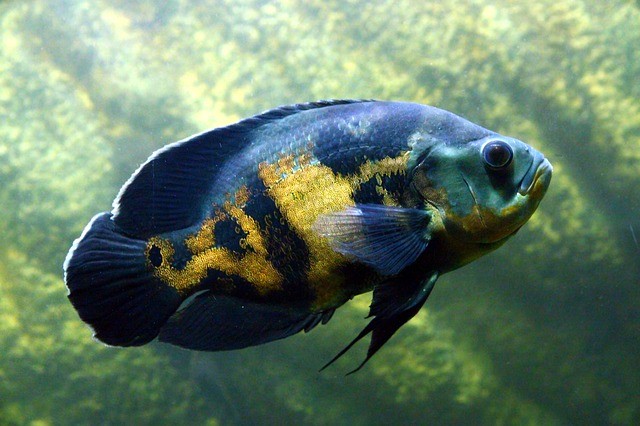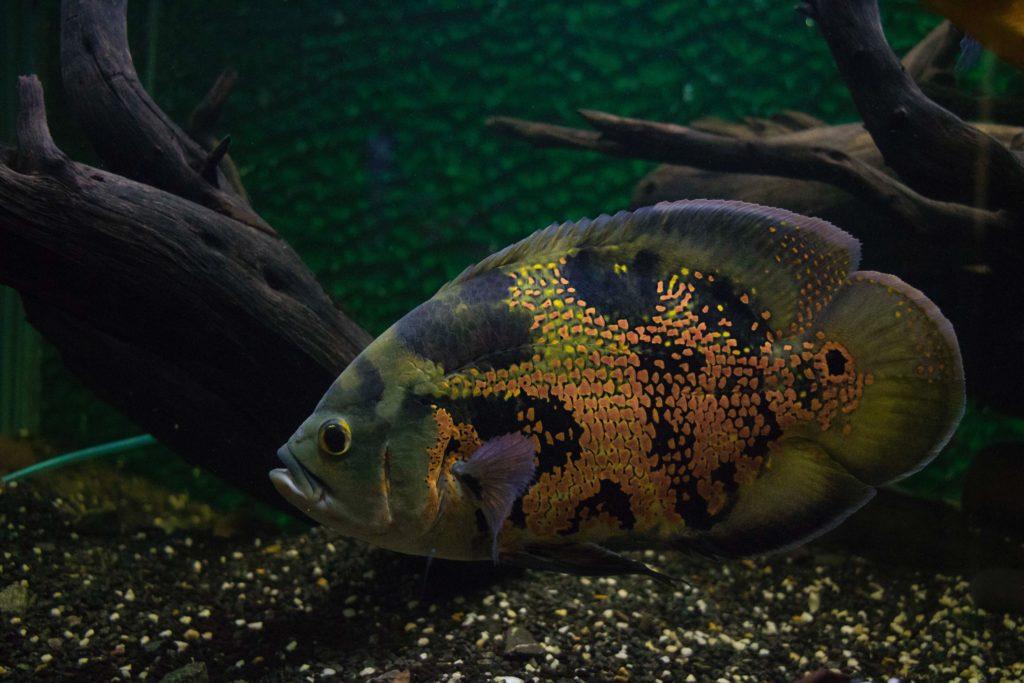You’ve just purchased a fish – a beautiful new Oscar. Congratulations! Oscars are tropical, freshwater fish, native to South America where they’re found wild in the Amazon basin.
As with most tropical fish, they’re not generally suggested as pets for the casual fish owner who’s not up for regular maintenance. Nonetheless, if you’re ready to care for your unique, scaly friend, they can be some of the most fun creatures to own!
Oscar fish are beloved for their gorgeous colors, as well as their playful attitudes and intelligent responses to humans.
However, there are some key issues to watch out for. Oscars, in particular, are susceptible to a concerning disease that gives them a macabre nickname: hole in the head fish!
True to its name, this disease results in a hole appearing in the fish’s head, or sometimes on other parts of the body. While it’s obviously not ideal, hole in the head fish disease is both avoidable and treatable.
Here’s what you should know about your hole in the head Oscar…
Contents
What is Hole in the Head Disease?
Hole in the head fish disease can be seen in fish of all kinds, across many different environments.
Both saltwater and freshwater fish have been known to develop hole in the head disease, though it’s more prevalent in freshwater species. This puts your Oscar at higher risk than its saltwater counterparts.
Symptoms
What can you expect to see if your fish develops hole in the head disease?
Well, aside from the titular hole in their head, your fish may develop pits all over their body, as it’s generally known to spread once contracted.
This can be very dangerous for many reasons – first and foremost because these holes are open wounds, which leave your fish more susceptible to other illnesses. Additionally, if the holes are allowed to spread, they could affect the fish’s lateral line, a key directional organ.
If left untreated, the holes may begin to trail mucus, infecting the rest of the tank while also weakening your ailing fish’s immune system further. They may produce thin, pale feces, and your Oscar itself will start to grow paler in its coloration.
Hole in the head disease attacks not only the fish’s skin, but its inner organs as well, which shows early on.
Eventually, the fish will lose its appetite and cease eating altogether, leading to death – if outside infections don’t get them first.
Causes
It’s worth noting that hole in the head fish disease is seen more often in aquarium species than out in the wild. This has led researchers to conclude that a major contributor, if not an outright cause, is simply bad aquarium care.
The disease itself is the result of a parasite called Hexamita, which takes root in poorly maintained aquariums of any size.
It’s believed that the parasite can appear in healthy fish without affecting them at all; it’s not until their immune system is weakened by illness or its environment that Hexamita can develop into hole in the head disease.
How to Stop Hole in the Head Disease in its Tracks
This disease isn’t a death sentence for your Oscar – or, at least, it doesn’t have to be.
Here are treatments you can apply to stop or prevent this illness from taking over your fishy friend.
Prevention
As you may have guessed, the best method for keeping hole in the head disease at bay is to keep your aquarium up to code!
Change the water often, make sure it’s kept at the proper temperature for your unique species, and ensure it’s filtered properly.
Balanced water chemistry is essential; for instance, hole in the head disease has been found more often in tanks where the nitrate levels are too high.
Another way to bolster your Oscar against this disease is with vitamins. Improvements in your Oscar’s diet can go a long way in keeping them strong enough to combat Hexamita.
Treatment
If your Oscar has already contracted this disease, don’t panic! There are medicines to help return them to full health.
Metronidazole is the most common medicinal treatment for hole in the head disease. Generally, it can only be obtained by going to a veterinarian, who may prescribe medicated fish food or a mixture you can add to the water, should your fish reach a stage where it is no longer eating.
This treatment will help flush out the parasite from your Oscar’s system.
Beyond medicine, it’s highly recommended to clean the tank! Begin by removing the infected fish and placing them in quarantine to undergo treatment, should they share a tank with other inhabitants.
If they’re your only fish, then be sure to thoroughly clean the tank and maintain a higher level of cleanliness even after their treatment has finished. By doing so, you will ensure their long-term health – as well as safety from contracting this disease once again.
Here’s a video showing more details on hole in the head disease.
Do you have any advice for dealing with hole in the head disease?




